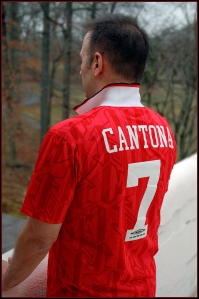Blatter’s election and US Justice Department indictments
Disclaimer: I don’t have any unique insight into Sepp Blatter’s character or motivations. Maybe he’s a greedy megalomaniac using his role as FIFA president to enrich himself. But at age 79, that doesn’t seem likely to me. What I do know is that he took over as FIFA president in 1998. For the first 50+ years of world championships, they were exclusively European or South American affairs. After 1986 (Mexico) and 1994 (USA), they were European, South American, and North American affairs. Blatter was elected on the promises to grow the game primarily by increasing funding for poorer countries’ soccer programs, and broadening the World Cup host sites. In this century, World Cup sites have basically rotated between traditional and groundbreaking locations; Japan and South Korea (2002), Germany (2006), South Africa (2010), Brazil (2014), Russia (2018) and Qatar (2022). In large part because of Blatter, the “World” in World Cup, now includes Asia, Africa, Eastern Europe, and the Middle East.
Despite western media disapproval and U.S. Justice Department indictments of FIFA officials (primarily CONCACAF and CONMEBOL officials) and some sports marketing executives on corruption charges, Blatter was re-elected as FIFA president, which should never really have been in doubt. Why? Because FIFA is an association of 209 countries, each with one vote. The countries of Asia and Africa are especially loyal to Blatter because he has followed through on his promises to them.
There are two ways to look at his tenure. One, you can say he aggressively clings to power by currying favor with or even bribing the poorer countries. Cynically, it is a good electoral strategy because it is the cheapest way to gain loyalty. From this view, journalists can create an image of Blatter bribing countries for their loyalty and through that maintaining a stranglehold on power. He entered office with this image in 1998.
From a more benign perspective, while he was criticized for promising rewards to soccer federations in South-East Asia, Eastern Europe, and Africa during his initial presidential run (see the link above) he delivered on those promises with development money and hosting opportunities over the years and the federations have remained loyal because of it. Voting and democracy often work that way.
As far as the indictments go, I have a more narrow view of corruption than most. From my perspective, FIFA is a private organization and how they decide to choose leadership, engage in sponsor relationships, and choose host sites is their internal business. If soccer officials are taking bribes as part of the selling of media rights, that’s money that should be going to their organizations. If FIFA or its confederations choose to press charges, that’s an issue since they are the aggrieved parties. If officials are trying to buy votes in internal elections and FIFA doesn’t want that to happen, then the officials should be kicked out of FIFA. I don’t see an overriding public interest. So I’m not sure what the US Justice Department is up to other than that they will probably fashion some nice financial settlements from those involved.
Looking closer to home, the franchise movements of NBA and NFL franchises seem to be equally or more corrupt in that they do involve the public interest. Every team that moved, moved because another city essentially bribed them. For example, the Los Angeles Rams were enticed to move to St. Louis by the promise of a taxpayer funded new stadium, guaranteed sell outs, and taxpayer subsidies to compensate for unsold tickets if the sell outs didn’t occur. Does that make the selection of soccer World Cup sites look dirty by comparison? Is that “just doing business” or corruption?
Why sports matter
Whatever Blatter’s motivations are and however you define or accept corruption in sport (a broad definition would include almost everything Adidas and Nike have done in the endorsement and promotion world for decades—see Sneaker Wars– including Horst Dassler putting Blatter in place at FIFA to begin with), Qatar 2022, cited in recent days as a symbol of disgrace, is likely to have a profound, positive legacy. Being the 2022 hosts, in part, caused Qatar to commission a study on the welfare and treatment of migrant workers. In it, they found 964 migrants died in Qatar in 2012 and 2013, mostly from illness and “sudden cardiac death”. A recommendation from the report, “worker welfare standards, such as those introduced in February (2014) by the Qatar 2022 football World Cup organisers, should be made mandatory in all contracts issued by public authorities”. The Guardian says such a move, “would immediately raise the bar on many of the large infrastructure projects.”
All who have looked at this agree that there needs to be more data and research, but it is important to note that there are 1.4 million migrant workers in Qatar, most from Nepal, Sri Lanka, and India. According to the Guardian, the Indian embassy says that “the number of deaths was in line with the average in their home country,” which could be the case if the reported numbers are accurate, since it would equate to a death rate of 4 hundredths of one percent per year among migrants.
Recently, though, reports have been popping up (in the Washington Post, in Fast Company) that try to tie the indictments of the officials in the western hemisphere confederations directly to all migrant worker deaths in Qatar- which is a case study in itself of how the internet works. Take a kernel of something, embellish and run to clickbait gold!
The reality is that we do live in a world where for many the best opportunities lie in dangerous travel to dangerous occupations. FIFA didn’t create that. Whether it’s by good intention or not, they do shine light on it wherever they go because soccer attracts attention everywhere. If Sepp Blatter and FIFA hadn’t decided to hold the tournament in Qatar in 2022, would as many people care about, or know about, the working conditions of migrant workers in Qatar? Will the working conditions improve more quickly because of the World Cup? Will the bar be raised? I believe it will. If nothing else, the commercial interests of sponsors will demand it and the organizers in Qatar will do everything they can to make it happen in their desire for the event to be considered a smashing success. That’s a valuable legacy that can outweigh any white elephant stadiums that might be left over and a positive development that likely wouldn’t occur if Blatter wasn’t (pick one) a. bold enough to hold World Cups in new places or b. beholden to Middle-East, Asian, and African confederations for his power.






